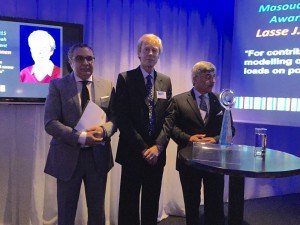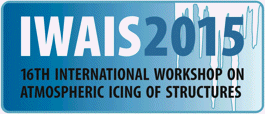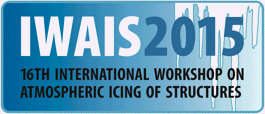Lasse Makkonen awarded price
The Masoud Farzaneh prize 2015 was awarded to Lasse Makkonen, VTT Technical Research Centre of Finland at a special ceremony held at the IWAIS conference in Uppsala July 1, 2015.
Dr. Makkonen’s background is in geophysics, meteorology and ice research but his approach is multidisciplinary. He is best known for his work in modeling of icing of structures with applications to power lines, communication towers, ships and wind turbines. These models are applied worldwide in the design of structures. Makkonen has published more than 230 scientific papers, of which 70 are in international journals. He is also author of 11 patents.
Lasse Makkonen’s present main interest is in microphysics of surface phenomena such as phase change, friction and adhesion. The applications include solidification processes in all scales, particularly as they relate to accretion of ice and snow. Another present interest of Makkonen’s is the theory of extreme value analysis and its application to evaluating structural safety and strength of materials.

This years winner of the Masoud Farzaneh Award: Lasse Makkonen, Principal scientist at the VTT Technical Research Center of Finland (middle). Left Mustafa Fahmi, Vice-principal at the University of Québec at Chicoutimi and right Masoud Farazaneh, Professor in Electrical Engineering at University of Québec at Chicoutimi.
The University of Quebec in Chicoutimi (UQAC) was represented at the ceremony by its Vice-Rector, Mr. Mustapha Fahmi. Masoud Farzaneh, Professor in Electrical Engineering at University of Québec at Chicoutimi, was also present.
The Masoud Farzaneh Award was established in 2010 by Université du Québec à Chicoutimi (UQAC) in honour of Professor Masoud Farzaneh, an internationally renowned researcher in the field of power transmission and distribution in cold climate regions, whose contribution and impact made UQAC a world leader in this domain.
This prize is awarded biannually, every odd year, to an individual for outstanding contributions related to the fields of power transmission and distribution, and high voltage engineering. Priority will be given to a researcher whose contribution takes into account the effects of atmospheric icing. In the evaluation process, the following criteria are considered: importance and impact of research, originality, leadership, publications and quality of the nomination.

